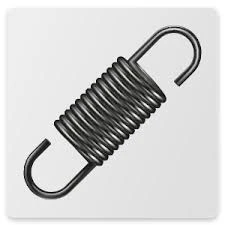
- Mobile Phone
- +8613931874955
- sales@cntcmetal.com
Wide Cavity Wall Ties for Enhanced Structural Stability and Insulation Performance
Understanding Wide Cavity Wall Ties A Key Component in Modern Construction
In the realm of modern construction, the importance of structural integrity cannot be overstated. Among the many elements that contribute to the robustness of a building, wall ties play a critical role, particularly in masonry construction involving cavity walls. One specific type that has garnered attention is the wide cavity wall tie. This article explores the function, types, installation, and benefits of wide cavity wall ties.
What are Cavity Walls?
Cavity walls are comprised of two separate walls (the outer leaf and the inner leaf) with a gap or cavity between them. This design is essential for various reasons, including enhanced insulation, moisture control, and structural stability. The air gap acts as an insulating layer, reducing heat loss and preventing moisture from penetrating into the building.
Role of Wall Ties
Wall ties are metal components that connect the outer and inner leaves of cavity walls. They provide stability and integrity to the structure by ensuring that both leaves act as a single unit. Without wall ties, the risk of structural failure increases significantly, particularly under the influence of forces such as wind or seismic activity.
Wide Cavity Wall Ties An Overview
Wide cavity wall ties are designed for use in wider cavities, typically exceeding 100 mm. These ties are essential in situations where standard ties might not provide sufficient support. With a broader design, wide cavity wall ties enhance the stability of the wall system by allowing for better load distribution between the two wall leaves.
Typically made from materials such as stainless steel or galvanized steel, wide cavity wall ties are engineered to resist corrosion and ensure longevity. Their manufacturing process often involves hot-dip galvanizing or applying a protective coating, making them suitable for various environmental conditions.
Types of Wide Cavity Wall Ties
There are several types of wide cavity wall ties, each designed for specific applications
. Some common types include1. Flat Wall Ties These are the most traditional design and are suitable for various cavity widths. They provide basic structural support and stability.
2. Vertical Wall Ties Designed for higher-load applications, vertical wall ties distribute weight more effectively. They are often used in taller structures where the height of the wall would otherwise create significant stress.
wide cavity wall ties

3. Helical Wall Ties These offer improved resistance to lateral forces and can be particularly beneficial in regions prone to high winds or seismic activity.
4. Thermal Wall Ties As energy efficiency becomes increasingly important in construction, thermal wall ties have been developed. These ties are designed to minimize thermal bridging, which can lead to heat loss.
Installation Process
The installation of wide cavity wall ties is critical to ensuring their effectiveness. They are typically installed during the construction phase of a building. The ties are placed at regular intervals along the height of the wall, usually about every 600 mm vertically and staggered horizontally to ensure even load distribution. Proper placement is essential to meet building regulations and standards.
During the installation, it is crucial to ensure that the ties are embedded adequately into both leaves of the wall. This connection can be achieved through various methods, such as the use of mortar or adhesive.
Benefits of Wide Cavity Wall Ties
Wide cavity wall ties offer numerous advantages, including
1. Increased Stability They provide added support in wider cavities, improving the overall stability of the structure.
2. Enhanced Performance With better load distribution, these ties help prevent cracking and structural failure.
3. Corrosion Resistance Made from durable materials, they resist corrosion, ensuring a long lifespan.
4. Improved Insulation Certain types can also reduce thermal bridging, contributing to improved energy efficiency in buildings.
In conclusion, wide cavity wall ties are a fundamental component in modern masonry construction. Their ability to provide stability, enhance structural integrity, and improve energy efficiency makes them indispensable in building design. As construction techniques evolve and the demand for more energy-efficient buildings increases, the role of wide cavity wall ties will likely become even more prominent in ensuring the durability and resilience of structures.
share:
-
Why Sacrificial Formwork Is Redefining Underground ConstructionNewsJun.06,2025
-
The Structural Dynamics of Modern Concrete: How Snake Spacers Revolutionize Flexible ReinforcementNewsJun.06,2025
-
Snake Spacers Smart-Lock Concrete Reinforcement with Surgical PrecisionNewsJun.06,2025
-
Snake Spacers: Reinforcement Precision for Modern Concrete ProjectsNewsJun.06,2025
-
Snake Spacers Powering Concrete's Structural DNANewsJun.06,2025
-
Slither into Success: Snake Spacers' Precision Bite for Unbreakable ReinforcementNewsJun.06,2025
-
Sacrificial Formwork: Building Stronger, Faster, and Safer StructuresNewsJun.06,2025



















